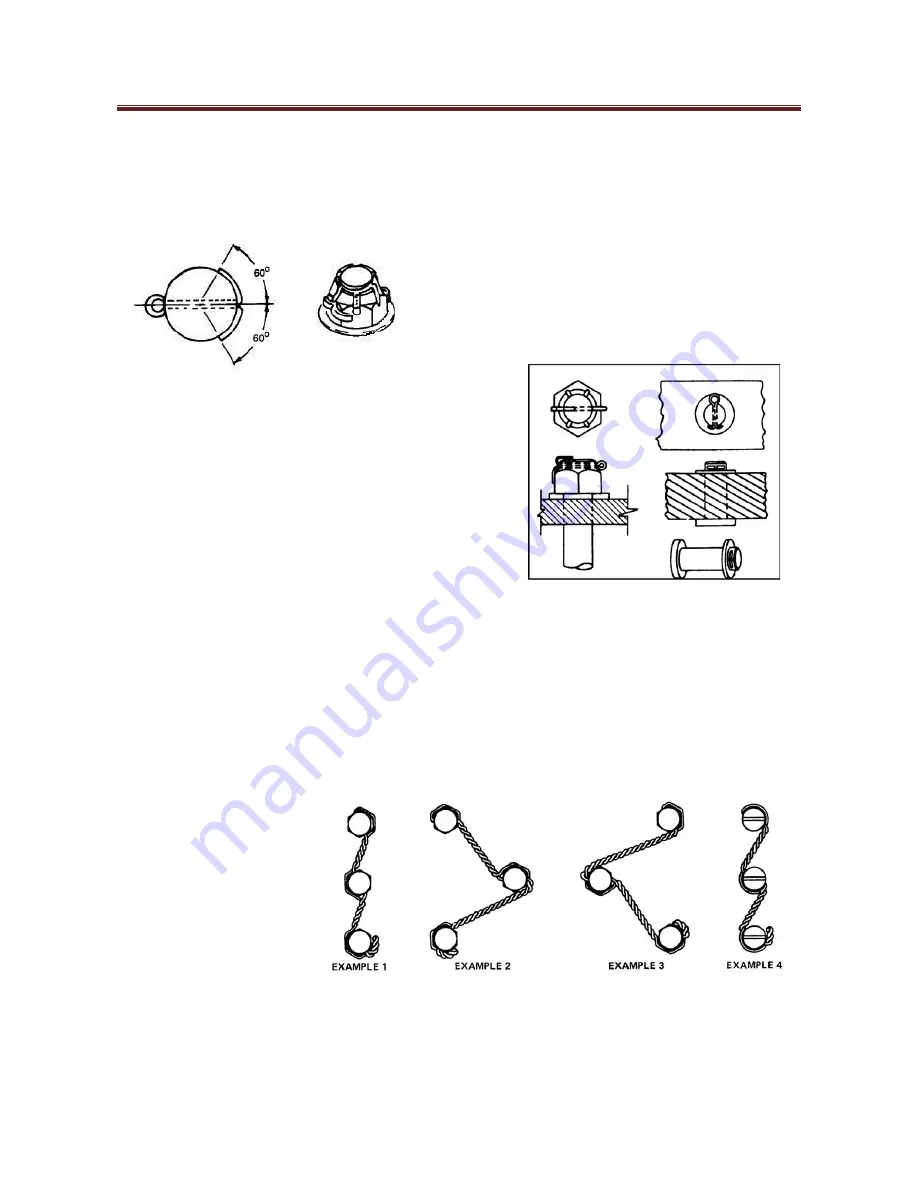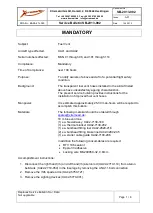
Zlin Aviation
Section 1
Maintenance Manual Aircraft Maintenance Manual
Issued: 01/02/2006
QAP-AMM-Rev02
Date of latest Revision: 23/01/2013
Page Number: 1-16
Cotter Pins
Securing by cotter pin is used for bolts subject to rotation. They are used because they can be
removed and reinstalled quickly. The diameter of the cotter pin should be the largest size that will
fit the slot in the castle nut or the hole in the bolt. To prevent injury the ends of the cotter pin should
be bent over the nut and firmly flat against each face of the nut then rolled and tucked.
Cotter pin removal is very easy: by means of a flat
screwdriver straighten up the
bent ends of the cotter pin and take the cotter pin out of
the hole with small pliers.
When securing castle nuts, always use new cotter pins.
Shift the new cotter pin into the hole in the bolt and bend
the cotter pin ends as shown in the figure.
Safety Wire
Procedure of bolt joint securing is by stainless steel wire having diameter of 0.032”.
The installation of safety wire is not intended to retain bolt or nut torque. It is installed to prevent
disengagement of screws, nuts, bolts, and other parts for added safety. Do not confuse aluminum
wire with stainless steel wire. Wire should only be stainless steel, do not use common wire or
ferrous metal which can rust or be attracted by magnetic portions of the aircraft.
Drilled bolts or screws do not need to be safety wired if they are installed with self-locking nuts.
Safety wire must be installed in a manner that will prevent the tendency of the part to loosen or
rotate. Safety wire ends are a safety hazard unless they are bent under and inward toward the part to
avoid sharp or projecting
ends. Safety wire must not
be nicked, kinked, or
mutilated. When cutting
off the end of the twisted
wire, leave at least four to
six completer turns (1/2”
to 5/8”) of wound wire to
complete a loop.
Examples of correct direction for drilled bolt safety wire
















































